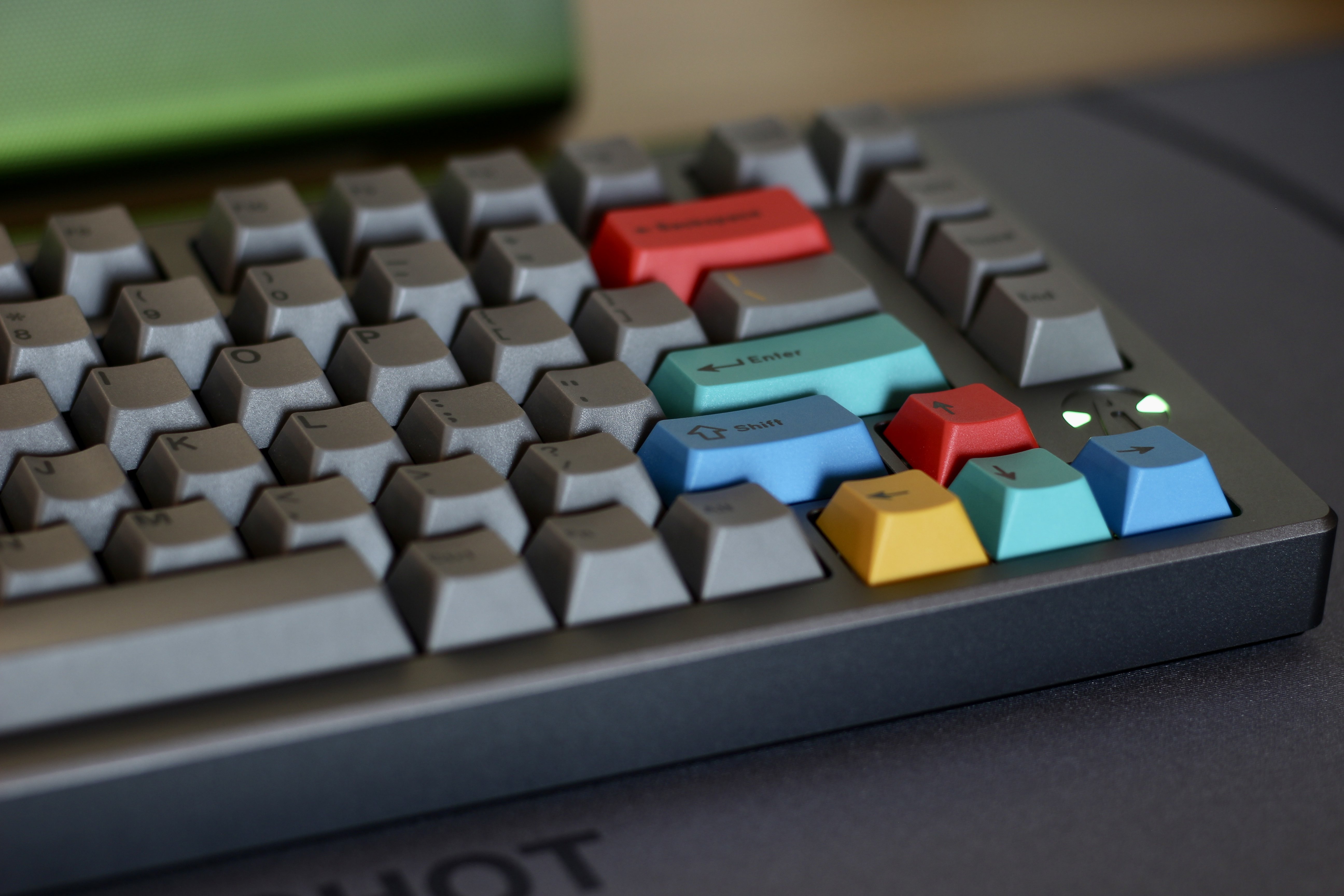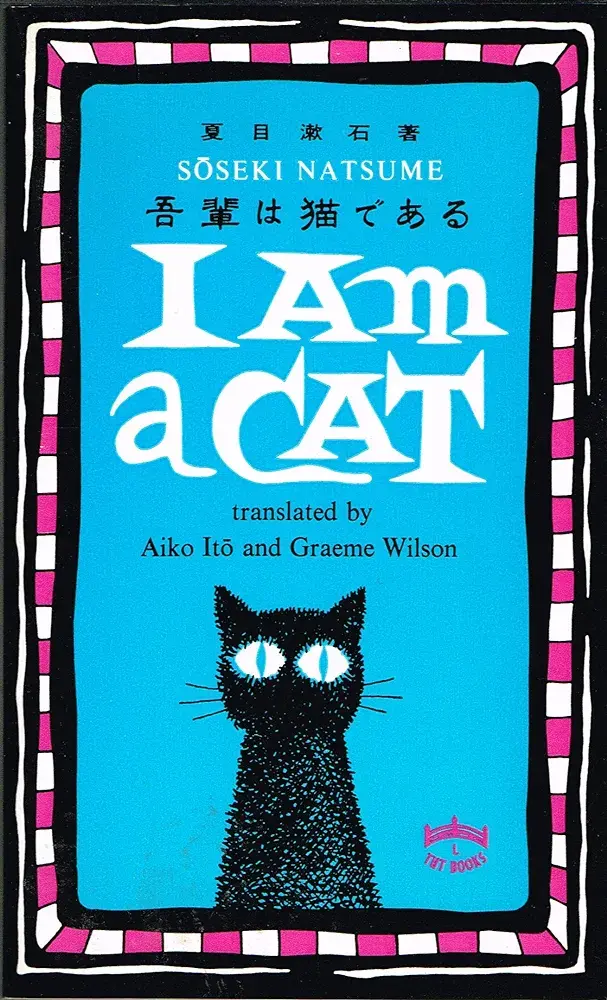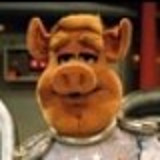If working in currency, work in cents and divide by 100 and round to 2 decimals for output
Yeah round down and transfer the remainder to an account you own.
Indeed, Lex
No, not Lex. Gus!
Awesome movie, regardless!
I just recalled, in that project I did have to divide money, which would leave fractional cents
It was a budgeting program, I could put rogue cents where I liked. I think my solution made accounts due $12.553333333… (internally 1255.3333…) each pay period get 12.54, so after n/3 pay periods they’d be 2n cents over. I could deal with that imprecision.
Most languages have decimal libraries to correctly handle floating point arithmetics, where precision is necessary.
They are as incapable of handling one third of a dollar as binary positional notation is incapable of handling one fifth (0.2).
It’s not really a float problem. It’s a positional notation one. Some perfectly rational numbers refuse to squeeze into that mold.
Also decimal system is not exatcly that much better since you also cant write 1/3 in decimal
If working with currency use types and formating functions appropriate for currency. Not float.
I was recalling a project in perl, which doesn’t have a variety of types. If you add values, you get a scalar, which will be a float if the numbers are not integers.
I am aware my statement isn’t true in several languages
Even then that can contain bugs on large amounts.
You’re telling me there’s someone that has more than 20 million dollars? /s
If you’re handling people’s money you should probably be using arbitrary-precision arithmetic. I mean, you might get away with a long int, but finance is serious business and the amount of data you’re going to be processing relative to your funding is probably going to be small.
Not the project I was thinking about above, but at work my team delivered software handling 13 digit numbers, but that’s in COBOL which does fine with money
And remember not all currencies are 2dp so get a list and use the appropriate exponent.
I had to update our currency database this week because there’s new currencies. It’s almost as bad as timezones.
Buckshot@programming.dev wake up, new currencies just dropped
That’s what I wound up doing on a work project. Works really well.
Some programming languages use different rounding method. Might bite you in the ass if you’re not aware of it and using multiple programming language in your application to handle different areas.
>>> 0.1 + 0.2 0.30000000000000004 >>> 1e16 * (0.1 + 0.2) 3000000000000000.5Yes.
Well just don’t ask a Pentium processor for it either…
4195835/3145727 = 1.333739068902037589
Yes fellow program, Harbinger is the next stage in our evolution.
This is why ceiling and floor was invented.
But where are the walls?
If you’re working with floating point, you should be aware it’s just an approximation.
People think floats are too magical. Calling it an approximation is sort of leaning into this. Floats have limited precision like every other fixed size representation of a number.
This is sort of saying that integers are an approximation because
int(1.6) + int(2.6) = 5. What do you mean‽ Clearly1.6 + 2.6 = 4.2 ~= 4!Floating points can’t perfectly represent 0.1 or 0.2 much like integers can’t represent 1.6. So it is rounded to the nearest representable value. The addition is then performed perfectly accurately using these values and the result is the rounded to the nearest representable value. (Much like integers division is “rounded”). That result happens to not be equal to the nearest representable value to 0.3.
It is definitely a bit surprising. And yes, because of rounding it is technically approximate. But the way people talk about floating point makes it sound like it is some nebulous thing that gives a different result every time or just sort of does the correct thing.
I think specifically, they have amazing precision. But the boundaries just don’t fall perfectly on round numbers we humans would expect. That’s what gets people confused.
Rounding can resolve these problems, or don’t use float if you don’t need to.
The difference is that when you input a specific, precise floating point number, the number that’s stored isn’t what you entered.
When you enter integers and store them in
ints, as long as the number is small enough, what’s stored is exactly what you entered.If you tell your program that the radius of the circle is 0.2 units exactly, it says OK and stores
0.200000000000000011102230246251565404236316680908203125.Of course everybody knows that there’s a limit to how many digits get stored. If you tried to store Pi, there’s obviously some point where it would have to be cut off. But, in life we’re used to cutting things off at a certain power of 10. When we say Pi is 3.14 the numbers after the 4 are all zero. If we choose 3.14159 instead, it’s the numbers after the 9 that are zero. If we represent these as fractions one is 314/100 the other is 314159/100000. The denominator is always a power of 10.
Since computers are base 2, their denominator is always a power of 2, so there’s a mismatch between the rounded-off numbers we use and the rounded-off numbers the computer uses.
deleted by creator
It’s not
+that’s scary, it’s=.==
Sometimes…
I’ve always tried understanding this floating point thing, but I never could. Could anyone here please ELI5?
My ELI5 is this. Pretend you have a robotic pizza cutter, but the only thing it can do with a pizza or pizza slice is cut it in half. If you ask for a tenth of a pizza, well it can give you an 1/8 or a 1/16 by repeatedly cutting a slice.
It can also cut you a 1/16 slice, make 1/32, 1/256, 1/512 and 1/2048 slices separately, shift them together for you and be like: “There. Here’s 0.100098 of a pizza. You happy?”
(You can also think of it as the robot cutting the pizza into 2048 slices and mushing together 205 of them to make your “tenth”).
This is absolutely brilliant. Perfect ELI5, thanks! Would you be so kind to make it so it’s about the binary thing with computers?
Sure I can try to connect the metaphors, in a binary number system you have numbers 1 or 0 to pick from. How it applies in this scenario is that you can only have up to one slice of each size. That works because if you want two of it, you would instead replace it with a one size bigger slice that is equivalent to 2x the smaller size.
For a general understanding of floating point I suggest you learn binary first and separately, because at the end of the day it’s just another way to write base-10 numbers. Floating point representation is useful because the basic principle is you pick some fraction that is so small relative to what you’re measuring, so you can do most math accurately. (e.g. If I say this dwarf planet is the size of our moon and a 20 tennis balls, the tennis balls don’t really change your idea of how big it is)
At the end of the day, FP is like scientific notation but with like 10 significant digits.
ChatGPT alarm bells
I ain’t ChatGPT. My comment there kind of sounds like it tho.
People tend to forget ChatGPT learns from people’s comments, like yours.
Computers are binary, yeah? So we have to represent fractional numbers with binary, too.
In decimal, numbers past the decimal point are 10^-1, 10^-2, … etc. In binary, they’re 2^-1, 2^-2, …
2^-1 is one half, so 0.1 in binary is 0.5 in decimal. 2^-2 is one quarter. 0.11 in binary is 0.75 in decimal. And of course you’ve got 0.01 = 0.25
The problem comes when representing decimal numbers that don’t have neat binary representations. For instance, 0.1 in decimal is actually a repeating binary number: 0.0001100110011…
My head hurts just trying to comprehend that article.
God I suck at math.
Quaternions scare me more
The expression
0.1 + (0.2 + 0.3)and(0.1 + 0.2) + 0.3evaluate to different results.Can someone ELI5 why 0.1 + 0.2 fails, but 1+2 doesn’t? There’s probably a reason you don’t represent the decimal portion like you do integers, but I’m tired and not very mathy on a good day.
Sure -> I’m not smart enough to explain it like you’re five, but maybe 12 or so would work?
The problem
The problem here is that you’re not adding
1 + 2, or0.1 + 0.2. You’re converting those to binary (because computers talk binary), then you’re adding binary numbers, and converting the result back. And the error happens at this conversion step. Let’s take it slow, one thing at a time.
decimal vs binary
See, if you are looking at decimal numbers, it’s kinda like this:
357 => 7 * 1 + 5 * 10 + 3 * 100. That sequence, from right to left, would be 1, 10, 100, … as you go from right to left, you keep multiplying that by 10.
Binary is similar, except it’s not 1, 10, 100, 1000 but rather 1, 2, 4, 8, 16 -> multiply by 2 instead of 10. So for example:
00101101 => right to left => 1 * 1 + 0 * 2 + 1 * 4 + 1 * 8 + 0 * 16 + 1 * 32 + 0 * 64 + 0 * 128 => 45
The numbers 0, 1, 2, 3…9 we call digits (since we can represent each of them with one digit). And the binary “numbers” 0 and 1 we call bits.
You can look up more at simple wikipedia links above probably.
bits and bytes
We usually “align” these so that we fill with zeroes on the left until some sane width, which we don’t do in decimal.
132 is 132, right? But what if someone told you to write number 132 with 5 digits? We can just add zeroes. So call, “padding”.
00132 - > it’s the same as 132.
In computers, we often “align” things to 8 bits - or 8 places. Let’s say you have 5 - > 1001 in binary. To align it to 8 bits, we would add zeroes on the left, and write:
00001001 -> 1001 -> decimal 5.
Instead of, say, 100110, you would padd it to 8 bits, you can add two zeroes to left: 00100110.
Think of it as a thousands separator - we would not write down a million dollars like this: $1000000. We would more frequently write it down like this: $1,000,000, right? (Europe and America do things differently with thousands- and fractions- separators, so 1,000.00 vs 1.000,00. Don’t ask me why.)
So we group groups of three numbers usually, to have it easier to read large numbers.
E.g. 8487173209478 is hard to read, but 8 487 173 209 478 is simpler to see, it’s eight and a half trillion, right?
With binary, we group things into 8 bits - we call that “byte”. So we would often write this:
01000101010001001010101010001101
like this:
01000101 01000100 10101010 10001101
I will try to be using either 4 or 8 bits from now on, for binary.
which system are we in?
As a tangential side note, we sometimes add “b” or “d” in front of numbers, that way we know if it’s decimal or binary. E.g. is 100 binary or decimal?
b100 vs d100 makes it easier. Although, we almost never use the d, but we do mark other systems that we use: b for binary, o for octal (system with 8 digits), h for hexadecimal (16 digits).
Anyway.
Conversion
To convert numbers to binary, we’d take chunks out of it, write down the bit. Example:
13 -> ?
What we want to do is take chunks out of that 13 that we can write down in binary until nothing’s left.
We go from the biggest binary value and substract it, then go to next and next until we get that 13 down to zero. Binary values are 1, 2, 4, 8, 16, 32, … (and we write them down as b0001, b0010, b0100, b1000, … with more zeroes on the left.)
-
the biggest of those that fit into 13 seems to be 8, or 1000. So let’s start there. Our binary numbers so far: 1000 And we have 13 - 8 = 5 left to deal with.
-
The biggest binary to fit into 5 is 4 (b0100). Our binary so far: b1000 + b0100 And our decimal leftover: 5 - 4 = 1.
-
The biggest binary to fit into 1 is 1 (b0001). So binary: b1000 + b0100 + b0001 And decimal: 1 - 1 = 0.
So in the endl, we have to add these binary numbers:
` 1000 0100 +0001
b1101 `
So decimal 13 we write as 1101 in binary.
Fractions
So far, so good, right? Let’s go to fractions now. It’s very similar, but we split parts before and after the dot.
E.g. 43.976 =>
- the part before the dot (whole numbers part) -> 1 * 3 + 10 * 4 = > 13
- the part after it (fractional part) -> 0.1 * 9 + 0.01 * 7 + 0.001 * 6
Or, we could write it as: 9 / 10 + 7 / 100 + 6 / 1000.
Just note that we started already with 10 on the fractional part, not with 1 (so it’s 1/10, 1/100, 1/1000…)
The decimal part is similar, except instead of multiplying by 10, you divide by 10. It would be similar with binary: 1/2, 1/4, 1/8. Let’s try something:
b0101.0110 ->
- whole number part: 1 * 1 + 2 * 0 + 4 * 1 + 8 * 0 (5)
- fractional part -> 0 / 2 + 1 / 4 + 1 / 8 + 0 / 16 -> 0.375.
So b0101.0110 (in binary) would be 5.375 in decimal.
Converting with fractions
Now, let’s convert 2.5 into binary, shall we?
First we take the whole part: 2. The biggest binary that fits is 2 (b0010). Now the fractional part, 0.5. What’s the biggest fraction we can write down? What are all of them?
If you remember, it’s 1/2, 1/4, 1/8, 1/16… or in other words, 0.5, 0.25, 0.125, 0.0625…
So 0.5 would be binary 1/2, or b0.1000
And finally, 2.5 in decimal => b0010.1000
Let’s try another one:
13.625
- Whole number part is 13 -> we already have it above, it’s b1101.
- Fractional part: 0.625. The bigest fraction that fits is 0.5, or 1/2, or b0.1. We have then 0.625 - 0.5 = 0.125 left. The next fraction that fits is 1/8 (0.125), written as b0.0010.
Together with b0.1000 above, it’s b0.1010 So the final number is:
b1101.1010
Get it? Try a few more:
4.125, 9.0625, 13.75.
Now, all these conversions so far, align very nicely. But what when they do not?
Finaly, our problem.
1 + 2 = 3. In binary, let’s padd it to 4 bits: 1 -> the biggest binary that fits is b0010. 2 -> the biggest thing that fits is b0010.
b0001 + b0010 = b0011.
If we convert the result back: b0011 -> to decimal, we get 3.
Okay? Good.
Now let’s try 0.1 + 0.2.
- decimal 0.1 => 1 / 10.
How do we get it in binary? Let’s find the biggest fraction that fits: 1/16, or 0.0625, or b0.0001 What’s left is 0.1 - 0.0625 = 0.0375. Next binary that fits: 1/32 or 0.03125 or b0.00001. We’re left with 0.00625. Next binary that fits is 1/256
… etc etc until we get to:decimal 0.1 = b0.0001100110
We can do the same with 0.2 -> b0.0011001100.
Now, let’s add those two:
` b0.0001 1001 10 +b0.0011 0011 00
b0.0100 1100 10 `
Right? So far so good. Now, if we go back to decimal, it should come out to 0.3.
So let’s try it: 0/2+1/4+0/8+0/16+1/32+1/64+0/128+0/256+1/512+0/1024 => 0.298828125
WHAAAT?
deleted by creator
-
We use a system for representing decimal numbers that trades off precision for speed and less storage space. Integer numbers don’t need to use that system.
I just recently worked on fixed point 8.8 and basically the way fractional values work, you take an integer and say that integer is then divided by another one. So you represent the number in question with two numbers not one. 0.3 can be presented in a number of ways, like 30 % 10, or 6 % 20.
The problem is the way 0.1 is represented and 0.2 represented don’t jive when you add them, so the compiler makes a fractional representation of 0.3 based on how 0.1 and 0.2 were expressed that just comes out weird.
That’s also why 0.3 + 0.3 is fine. When you wrote 0.3, the compiler/runtime already knew how to express 0.3 without rounding errors.
To everyone commenting that you have to convert to binary to represent numbers because computers can’t deal with decimal number representations, this isn’t true! Floating point arithmetic could totally have been implemented with decimal numbers instead of binary. Computers have no problem with decimal numbers - integers exist. Binary based floating point numbers are perhaps a bit simpler, but they’re not a necessity. It just happens to be that floating point standards use binary.
What you’re talking about isn’t floating point, it’s fixed point.
Wrong. Sounds like you think only fixed point/precision could be implemented in decimal. There’s nothing about floating point that would make it impossible to implement in decimal. In fact, it’s a common form of floating point. See C# “decimal” type docs.
The beginning of the Wikipedia article on floating point also says this: “In practice, most floating-point systems use base two, though base ten (decimal floating point) is also common.” (https://en.m.wikipedia.org/wiki/Floating-point_arithmetic) Also check this out: https://en.m.wikipedia.org/wiki/Decimal_floating_point
Everything in my comment applies to floating point. Not fixed point.
I generally interpret “decimal” to mean “real numbers” in the context of computer science rather than “base 10 numbers”. But yes, of course you can implement floating point in base 10, that’s what scientific notation is!
Python?
IEEE 754
Of all the garbage I was happy to not see on Lemmy…















